
Our first port of call on my Mediterranean cruise onboard MSC Preziosa was Bari, Italy. This would be the one port where I had no predetermined objective and really no clue as to what there was to do or where I might want to go. For any trip I take I usually research well in advance, but on this trip I wanted one port where I could simply explore on my own without any set plans. Without a specific destination in mind, we simply set off to roam and investigate Bari. When I saw the sign above, it was all I needed to make Eataly my destination of this port.
Before discussing anything about Eataly, let’s first talk about the city of Bari, Italy. Bari (pronounced like Bali and not like the oldest son of the Brady Bunch) is the capital city of the province of Bari and of the Apulia region. With a population of approximately 320,475 in the city as of 2011, the metropolitan area has about 1 million people. Where is Bari? Know how Italy is in the shape of a boot? Bari is at the heel of the boot. See it down there toward the bottom of the boot?
Upon arrival into the port of Bari, when I looked out of my balcony I saw what appeared to be an extremely flat city and an industrial looking port. What I didn’t know was that is that Bari is the second most important economic center of mainland Southern Italy after Naples and is well known as a port and university city. The following is from the daily program for MSC Yacht Club members about Bari:
The city is divided in two parts, a modern part, developed from the beginning of the 19th Century thanks to Gioacchino Murat, King of the two Sicillies, and the Old part that gathers the most important Medieval and Renaissance monuments. The Old City seems a labyrinth of narrow streets, closed courts and tower houses. It is known to be the city that carries the St. Nicholas (San Nicola). That privilege has made Bari and its Basilica one of the most important Orthodox centers established in Italy.
MSC Cruises offered shuttles which ran from the port into the city centre, which was about 10 minutes away by coach. The coaches ran every 15-20 minutes and the cost per adult was €8.50. I chose to pass the bus and decided to take off on foot toward the city. When we departed the ship a short time after 10 am it was hot and it only got progressively hotter throughout the day. The ship was to set sail at 3 pm, which meant whatever we were going to do meant we had to focus and walk like our lives depended on it because of the short time in port.
The walk along the cruise port was relatively quiet but for the noise from the arriving ferries of which there were several. While MSC Preziosa was the only cruise ship in port, many of the ferries were quite large in size. We continued along the roadway until we reached the main street, Corso Antonio de Tullio and decided we’d just walk along this street since it was near the water. It was on this street that we saw the sign for Eataly. If you’re not familiar with Eataly, it’s a marketplace with restaurants and items for sale that began in 2004 by Oscar Farinetti in Turin, Italy. The New York Times has described it as a “megastore” that “combines elements of a bustling European open market, a Whole-Foods-style supermarket, a high-end food court and a New Age learning center.” With locations in Italy, Turkey, Japan, Dubai, and the United States and new locations opening on a regular basis, Eataly is popping up just about everywhere these days. I got to experience it first hand while onboard MSC Divina and now on MSC Preziosa. I was absolutely dead set on seeing the store concept on land and while I was in Bari.
Going in search of Eataly meant that without concrete directions, we were relying heavily on the signage to get us to our destination. Along the way we would see so many interesting things to help distract us in the heat. One of these was Norman-Swabian Castle or Castello Normanno-Svevo. The following information is from Apulia’s Official Tourism portal:
The Norman-Swabian castle is the symbol of the city of Bari and its halls accommodate the government department responsible for the environment and historical buildings.
Built as a defensive bulwark along the main entrance to the old town, just at a stone throw from the cathedral, it is a must stop-off before adventuring in the old town alleys and streets.
The castle was erected by the Normans in the 12th century, destroyed in 1156 and then rebuilt again on the order of Frederick II between 1233 and 1240.
The peculiar strategic position of the castle within the city layout makes this building one of the most interesting fortresses in the region and a spectacular example of medieval construction technology. The building has been enlarged and rebuilt in several periods.
While I would’ve liked to have stopped, gone in, and explored the castle and the surrounding area, this girl was still on her mission to locate Eataly. Onward we pushed, past the crooked trees and through the heavy heat and humidity.
I stopped to take pictures of the sculptures embedded in this building, which showed soldiers and I do mean a lot of soldiers. I freely admit I knew nothing of Bari’s history with regard to World War II before my visit to Bari. If you’re like me and didn’t know, read the following information to get caught up on Bari’s importance in World War II history.
The air raid on Bari was an air attack by German bombers on Allied forces and shipping in Bari, Italy, on 2 December 1943 during World War II. In the attack, 105 German Junkers Ju 88 bombers of Luftflotte 2, achieving complete surprise, bombed shipping and personnel operating in support of the Allied Italian campaign, sinking 27 cargo and transport ships and a schooner in Bari harbour.
The attack put the port out of action until February 1944 and was called the “Little Pearl Harbor.” The release of mustard gas from one of the wrecked cargo ships added to the loss of life. The British and US governments covered up the presence of mustard gas and its effects on victims of the raid. Bari gained the unwelcome distinction of being the only European city to experience chemical warfare in the course of that war.
On that night in December 1943, the German bombers attacked the port of Bari, which was a key supply centre for Allied forces fighting their way up the Italian Peninsula. Several Allied ships were sunk in the overcrowded harbor, including the U.S. Liberty ship John Harvey, which was carrying mustard gas. The mustard gas was also reported to have been stacked on the quayside awaiting transport and was intended for use if German forces initiated chemical warfare. The presence of the gas was highly classified, and authorities ashore had no knowledge of it. This increased the number of fatalities, since physicians—who had no idea that they were dealing with the effects of mustard gas—prescribed treatment proper for those suffering from exposure and immersion, which proved fatal in many cases. Because rescuers were unaware they were dealing with gas casualties, many additional casualties were caused among the rescuers through contact with the contaminated skin and clothing of those more directly exposed to the gas. There were 628 mustard casualties among military and merchant marine personnel with 69 dying in the first two weeks. Most victims fully recovered. There was no accounting for the civilians who must have been exposed to the chemicals. Additionally, there was a mass exodus of civilians out of the city and some were probably gas victims that died for lack of care.
Onward we walked on the main thoroughfare admiring the small streets farther inland. I’m not sure what I thought Italy would look like, but it was strange walking around and thinking it felt somewhat familiar. Maybe it reminded me of any metropolitan area or even the North End of Boston, but it did have a sense of familiarity to it. I saw narrow, crowded streets with little to no free parking, lots of cafés and restaurants, and of course, churches of every kind. Probably the most famous church is the Basilica di San Nicola. Built between 1087 and 1197, there was some stealing of relics of St. Nicholas which were later buried in a crypt in 1089. But it gets even better! December 6 is Saint Nicholas Day, the main feast day of Saint Nicholas. On this day, it is traditional for the clergy of the basilica to lower a flask into the suberranean tomb of Saint Nicholas to extract some of the myrrh which is believed to exude from the relics. Containers of this myrrh are sent all over the world, and believers have reported numerous miracles as a result of being anointed with it. Guess what I want for Christmas this year?
I didn’t get to see the Basilica di San Nicola, but remember I was a woman on a mission to Eataly! We kept following the signs but Eataly was nowhere to be found. Where were they hiding it?
What’s a post by me without acknowledging some of the oddities of my day? Scroll through the pics above and keep in mind, I was hot, lost, and incredibly thirsty when I was deciding what to photograph. Following the Eataly signage, we continued walking, but Eataly was nowhere to be found. Instead of feeling completely distraught, I enjoyed taking in all of Bari, which included admiring the everyday life of those that lived there. At least that’s what I kept telling myself so as not to lose my mind since I felt completely lost. Yes, I was not born with an inherent sense of direction. That’s where Mr. TSG comes in handy. He used his Boy Scout skills to navigate us back to the port simply by paying attention to which way the wind was blowing since he knew it would be coming off the water.
I was never so excited as I was when I saw the water. Yes, I was disappointed that we hand’t located Eataly, but we had found our way back to the ship and before it left without us so that worked for me. On the way back we stopped at the terminal building to check it out and it had a few small shops and check in desks for the respective cruise and ferry lines, but it was completely dead at that time in the afternoon.
TSG Tip: We had never taken a cruise with multiple embarkation points, but it’s something that MSC Cruises does regularly and other cruise lines are adopting. While we were getting off the ship just for the day, some were departing the ship at the end of their cruise while yet others were beginning their cruise in Bari. This caused some confusion at the beginning of our cruise when we noticed not everyone was participating in the muster drill, but that’s because they already had on their day of embarkation. Therefore, don’t jump to conclusions so quickly!
The MSC Preziosa loomed in the distance, far larger than any building you could see from pretty much anywhere in Bari. It’s like orienting yourself in NYC by looking for the Empire State Building or looking for the John Hancock Tower in Boston. If you can see it, you can get to it. This was the first time we would have the chance to utilize the MSC Yacht Club entrance and I not only sought it out, but pretty much ran to it. I was able to bypass the long lines and head straight to my suite to change and grab a much deserved beverage.
The first picture above is from my Nike+ GPS watch. Total distance walked was nearly 6 miles all in an effort to locate Eataly, but where was it? Looks like we were about halfway there before the sign pointed us in the wrong direction. While the signage indicated that we should turn should’ve actually had us continuing straight on along the water. So close, but yet so far! But do you know what that means? Looks like I have to make a return trip to Bari in the future! It was a great port full of history and culture plus I got in a few miles of walking so it definitely wasn’t a dud of a day.




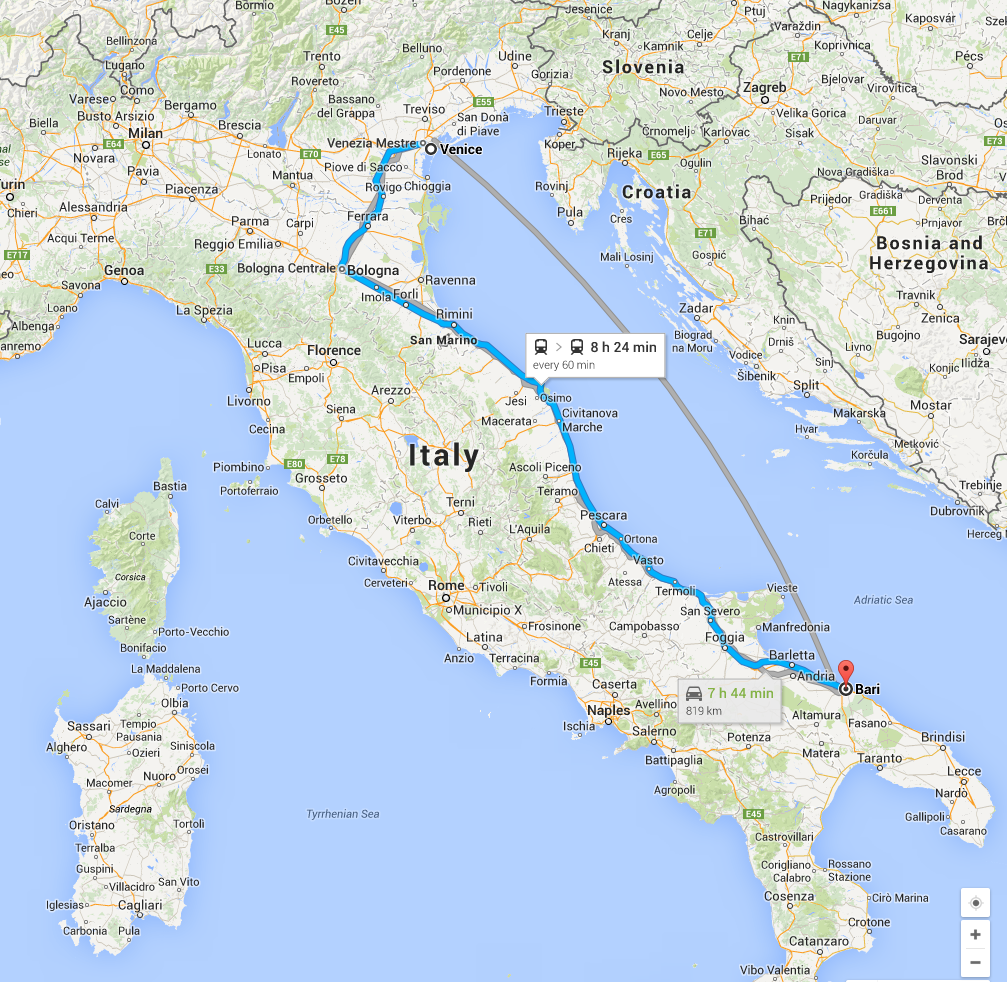
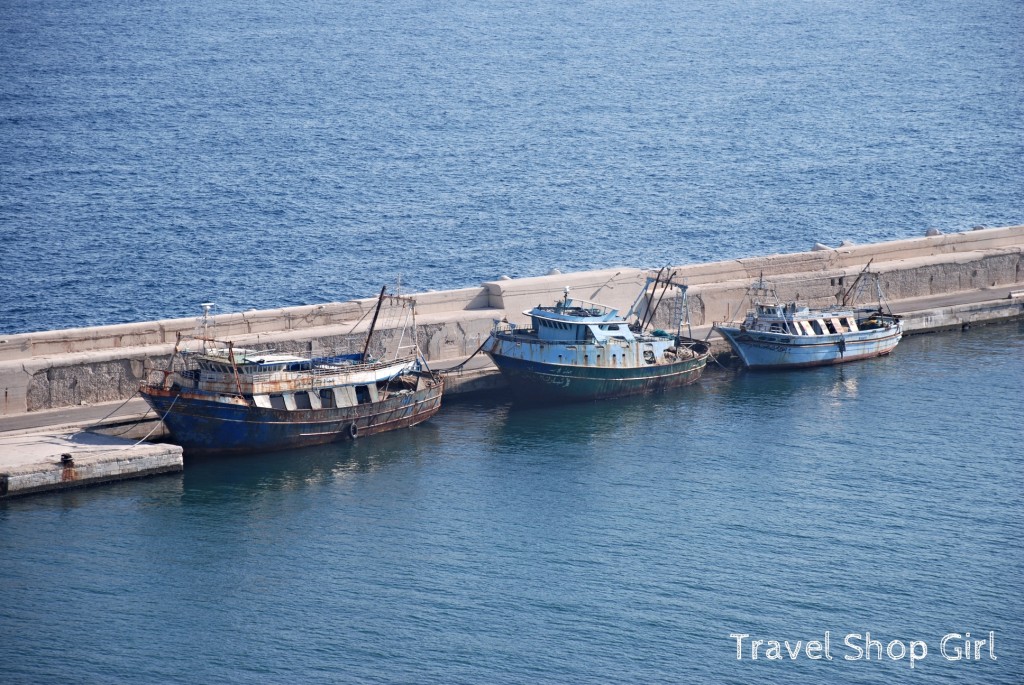
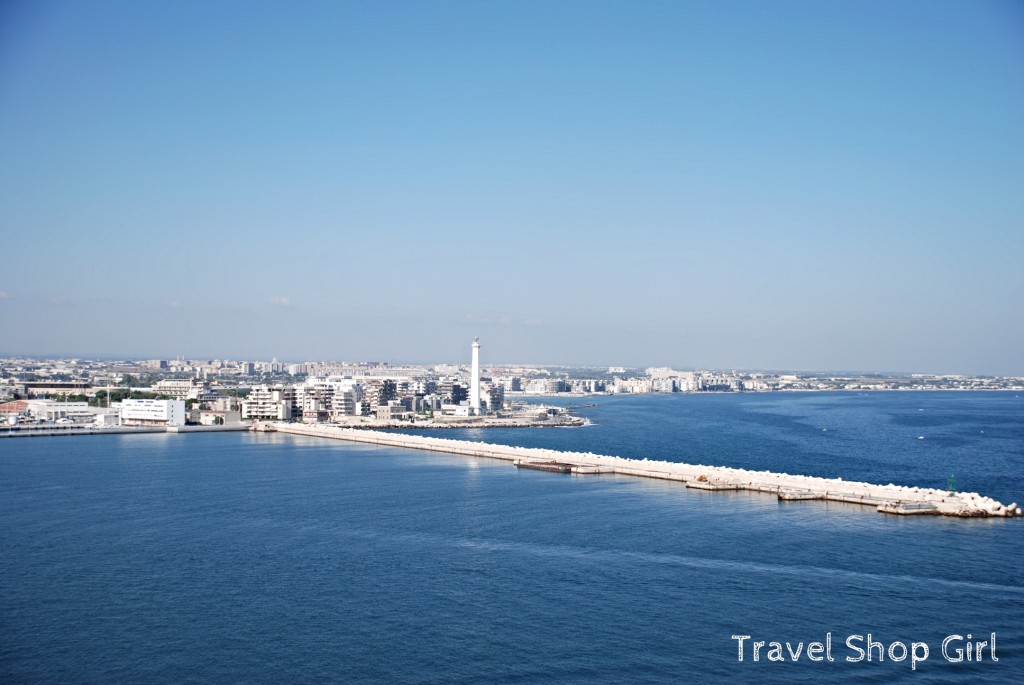
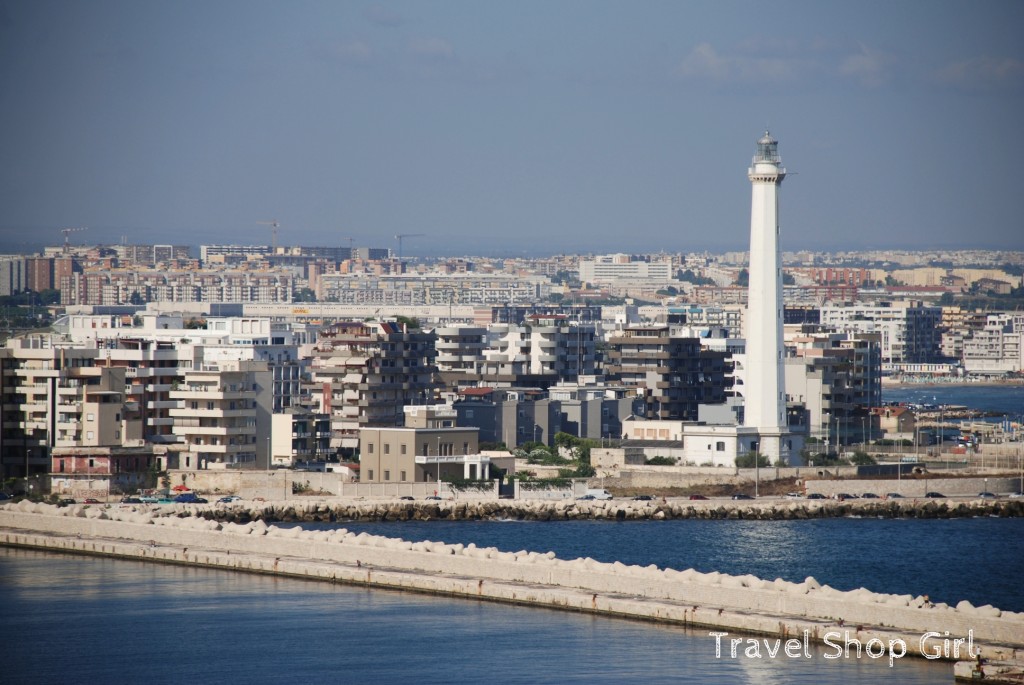
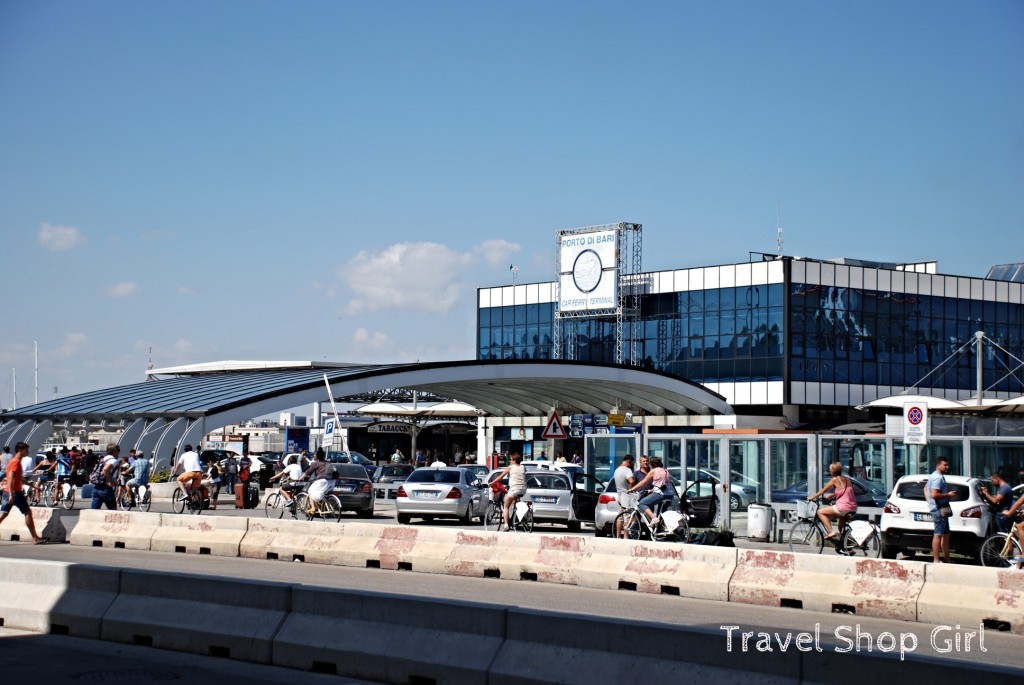
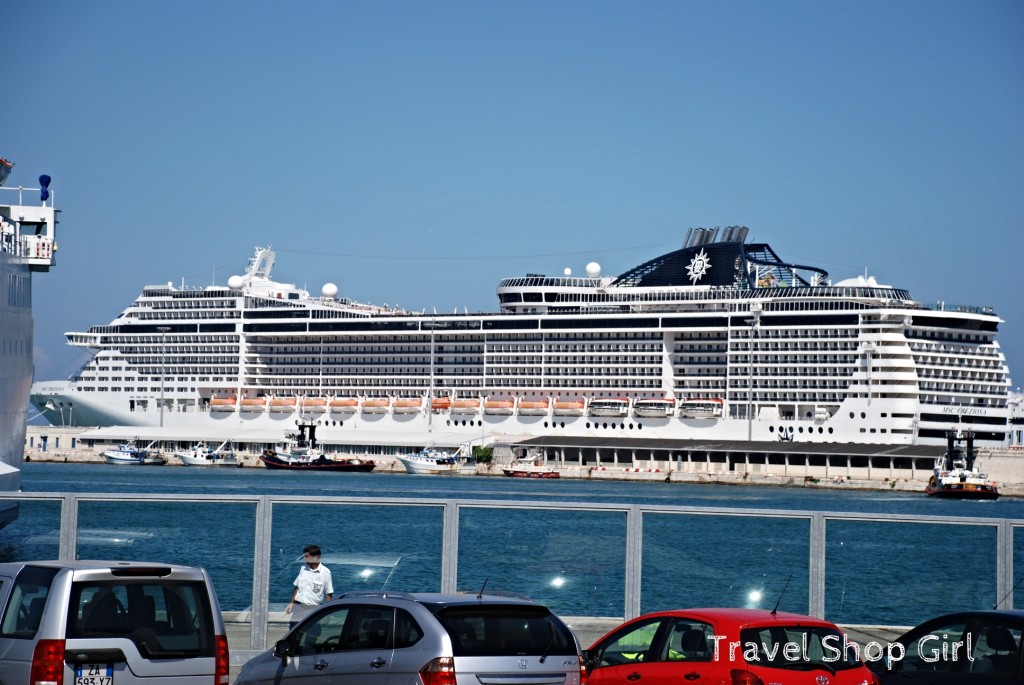
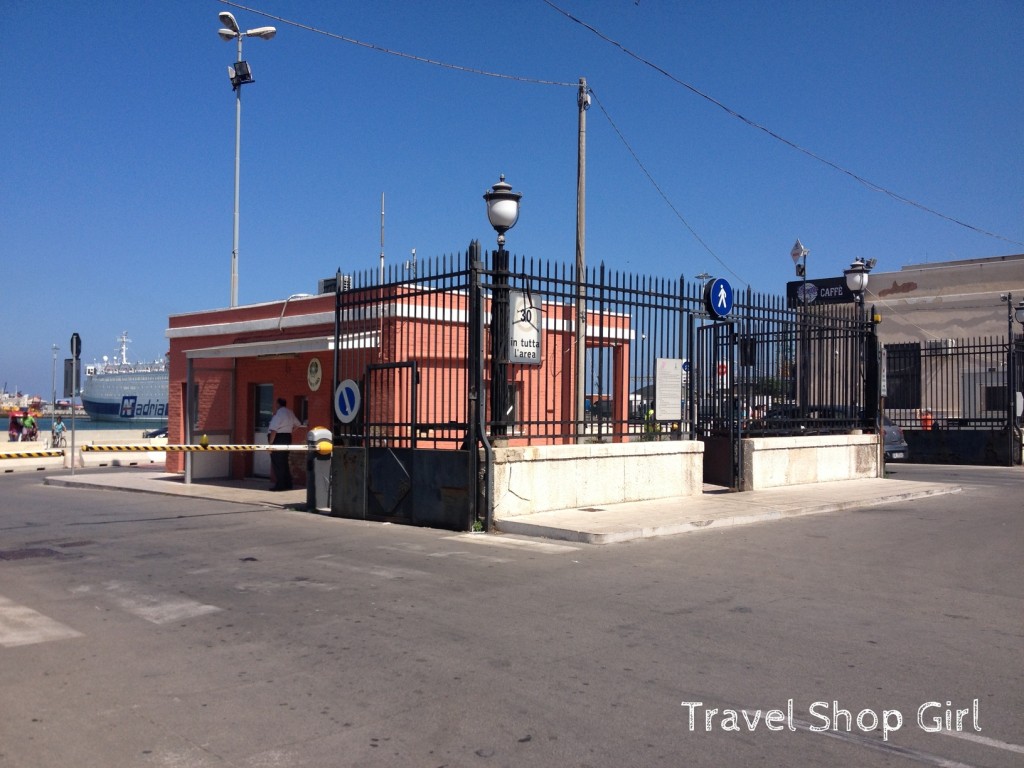
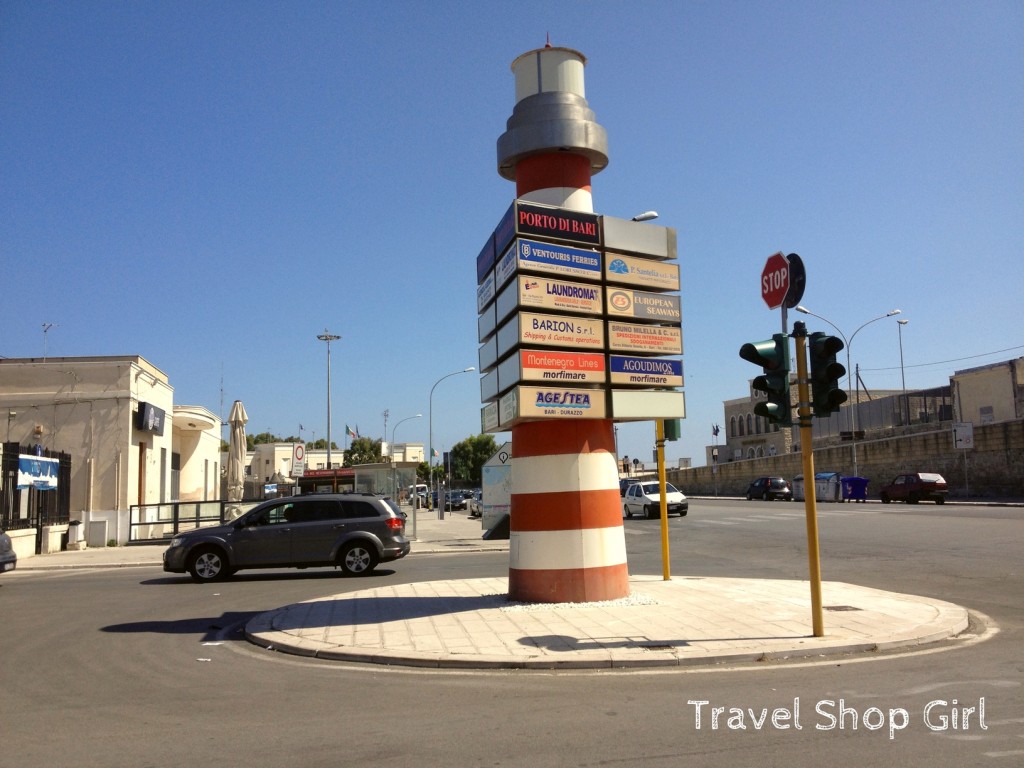
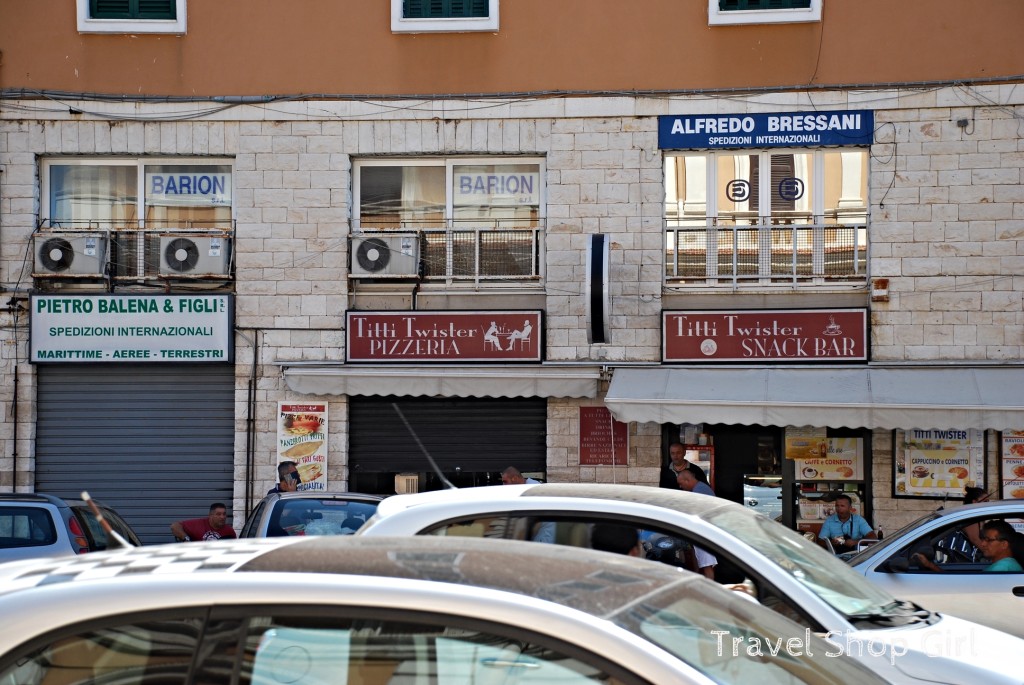
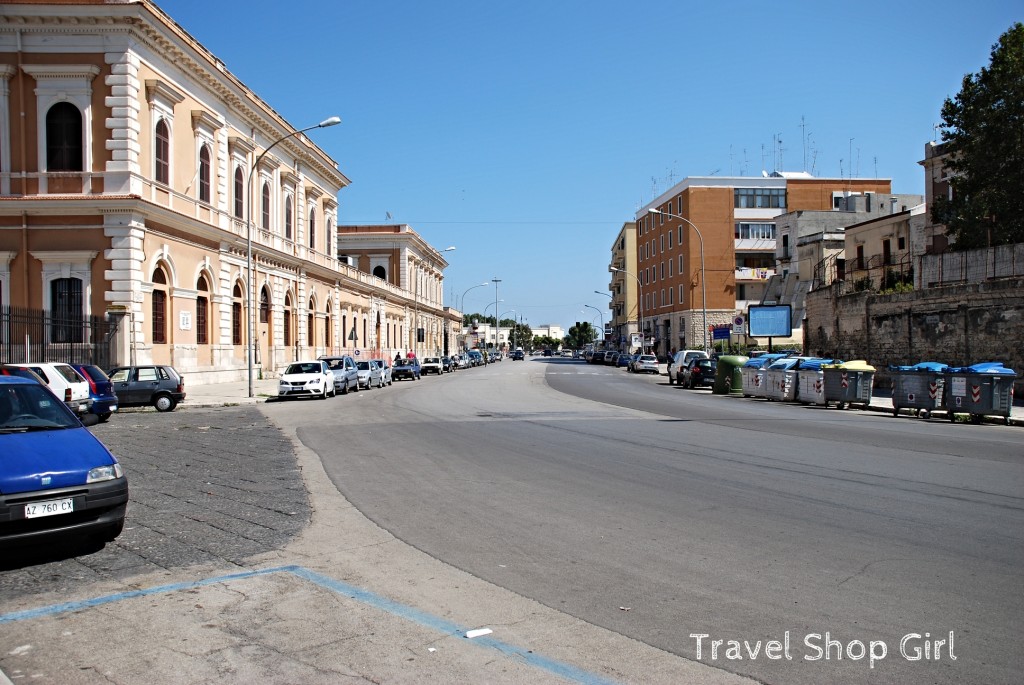
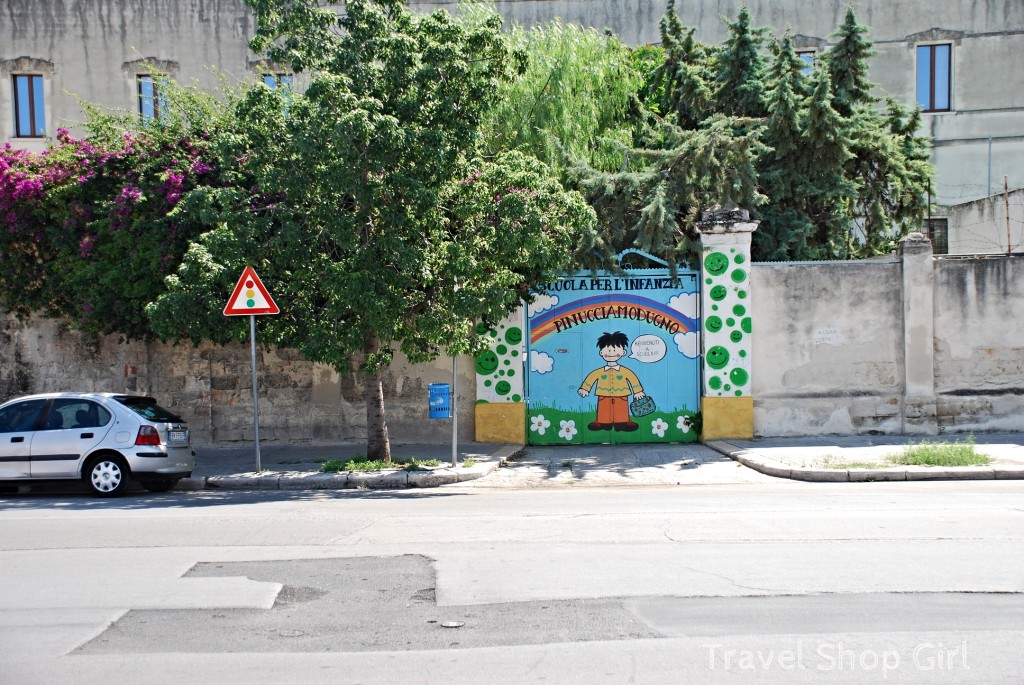
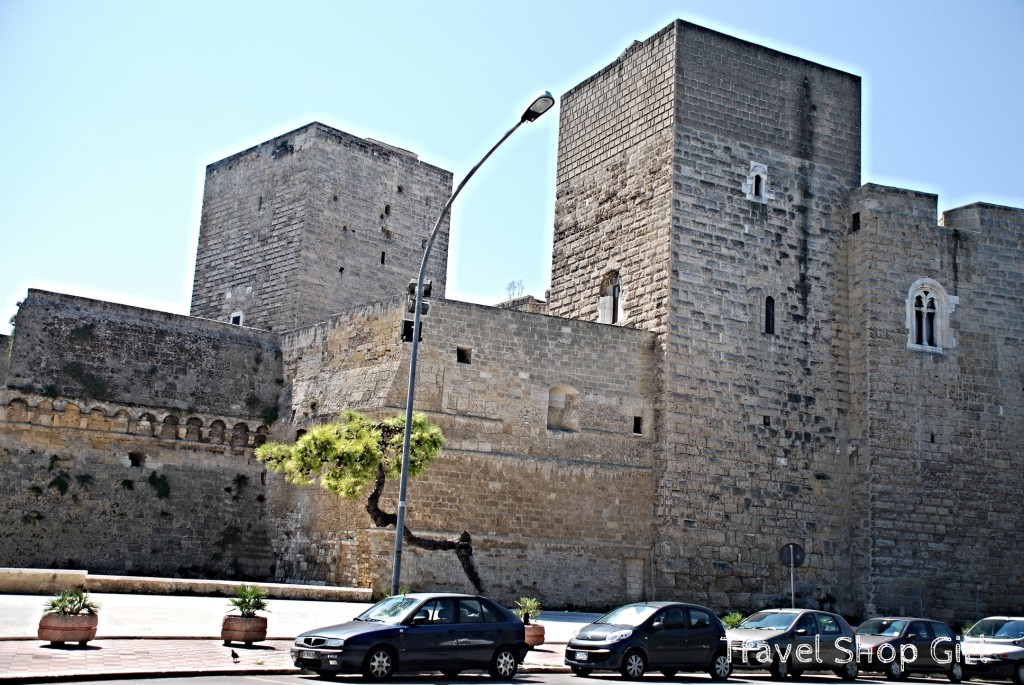
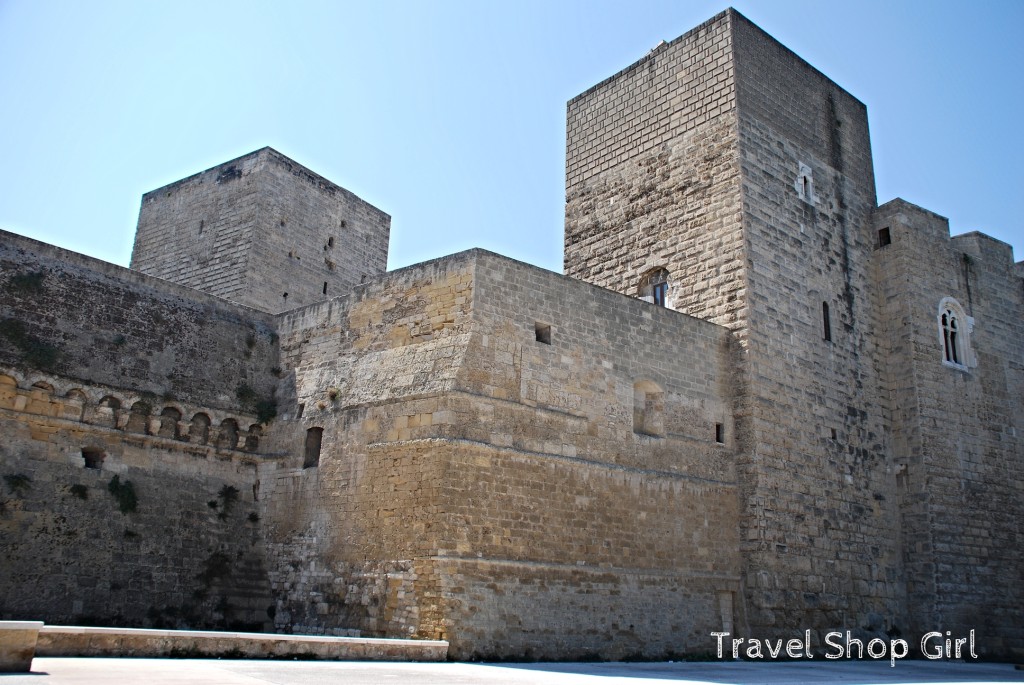
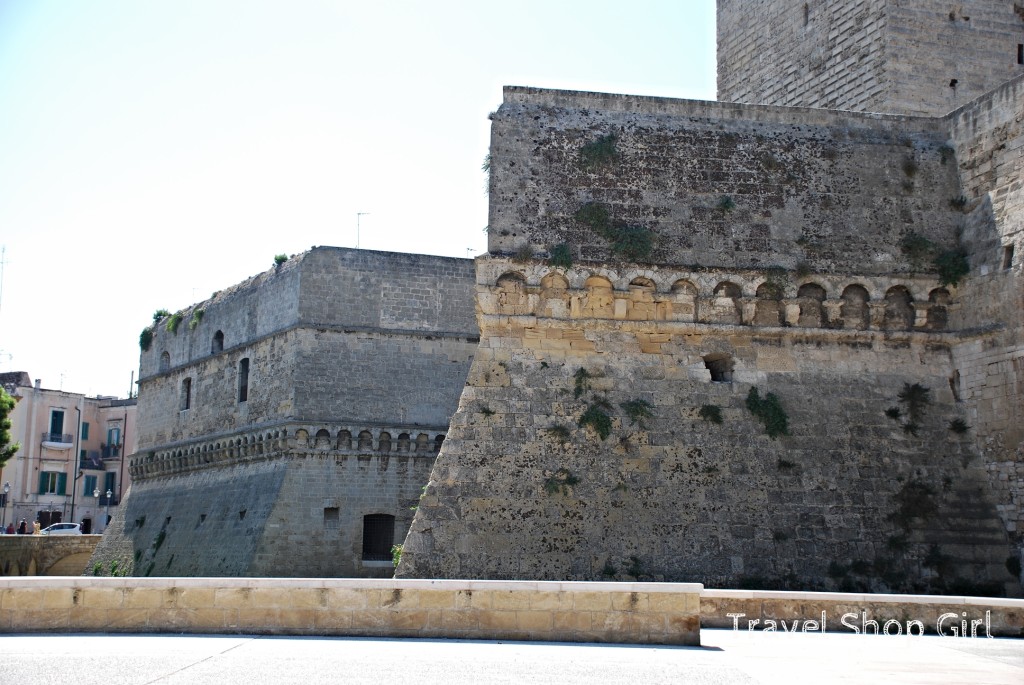
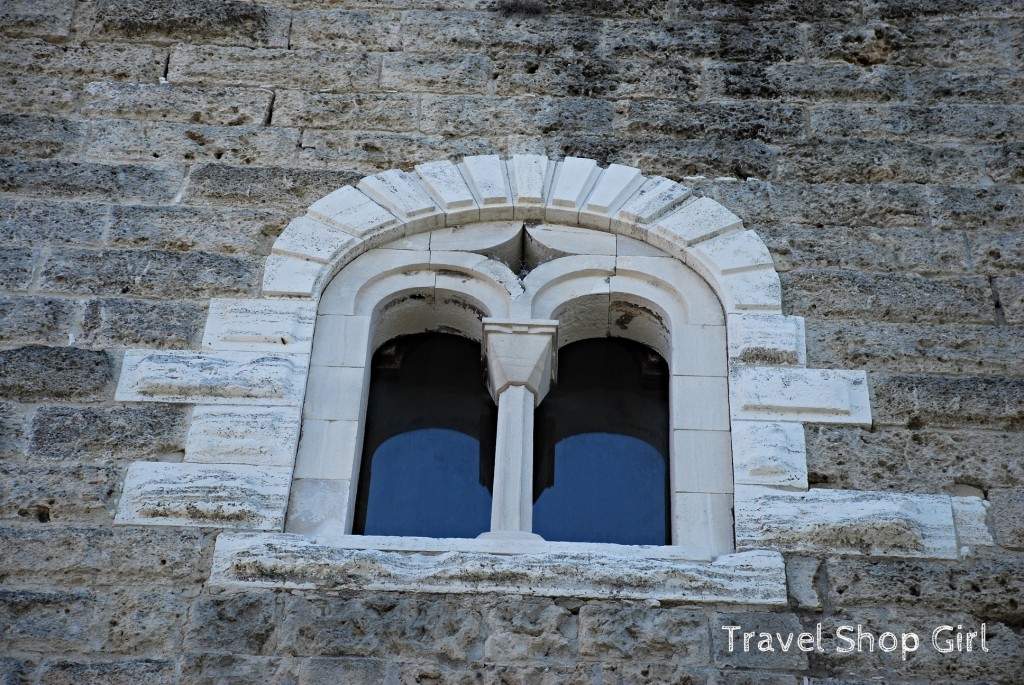
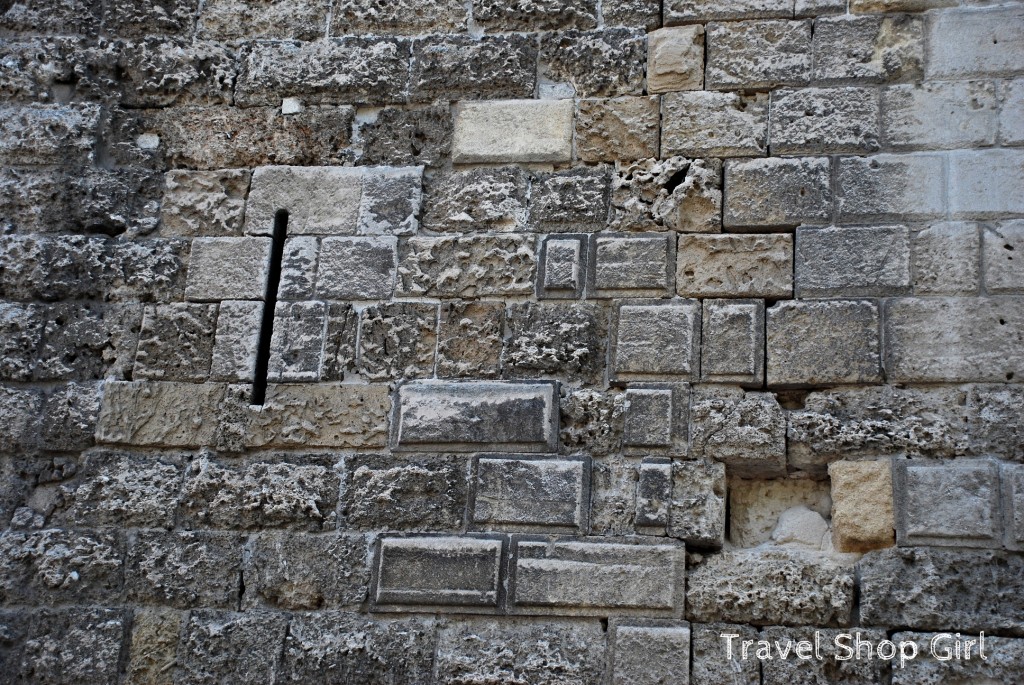
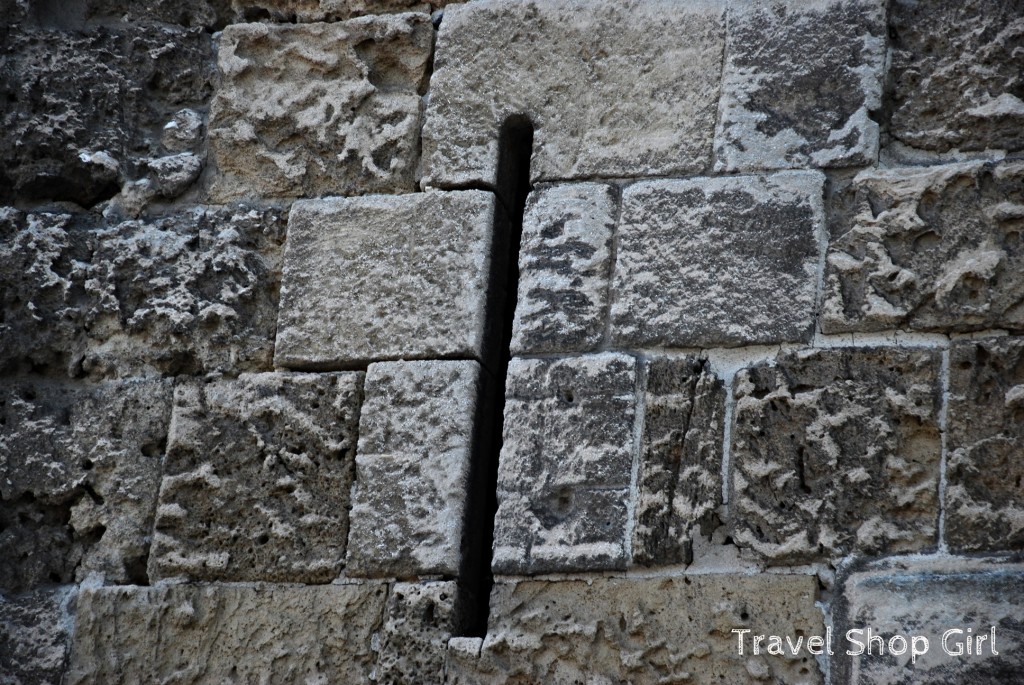
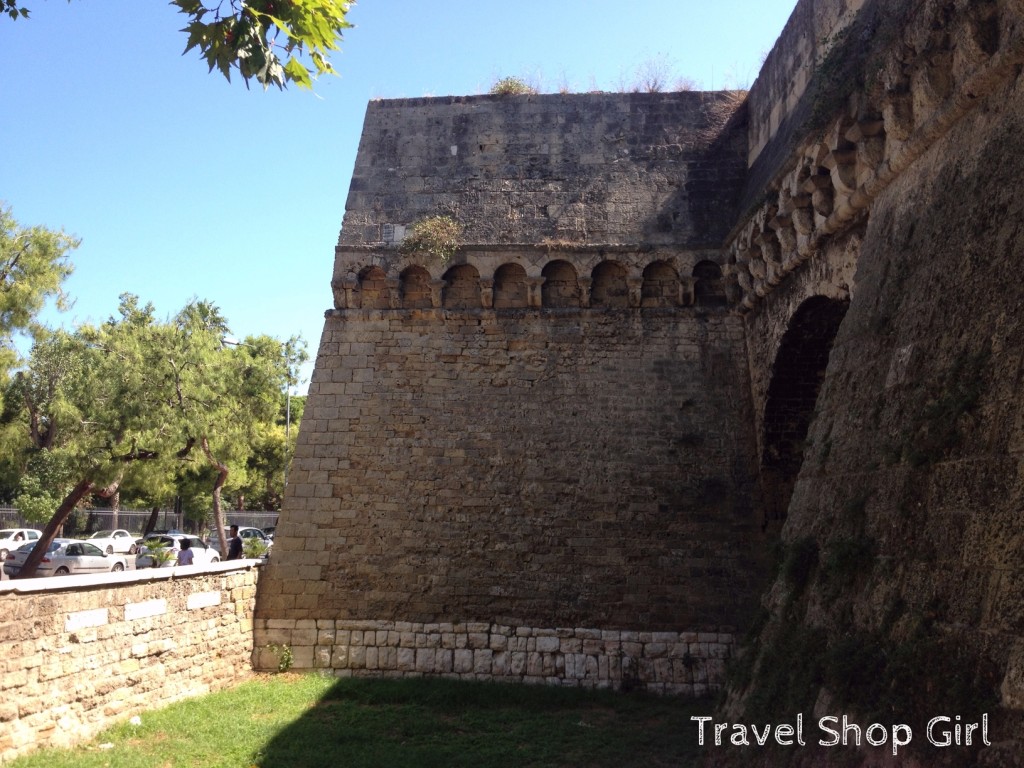
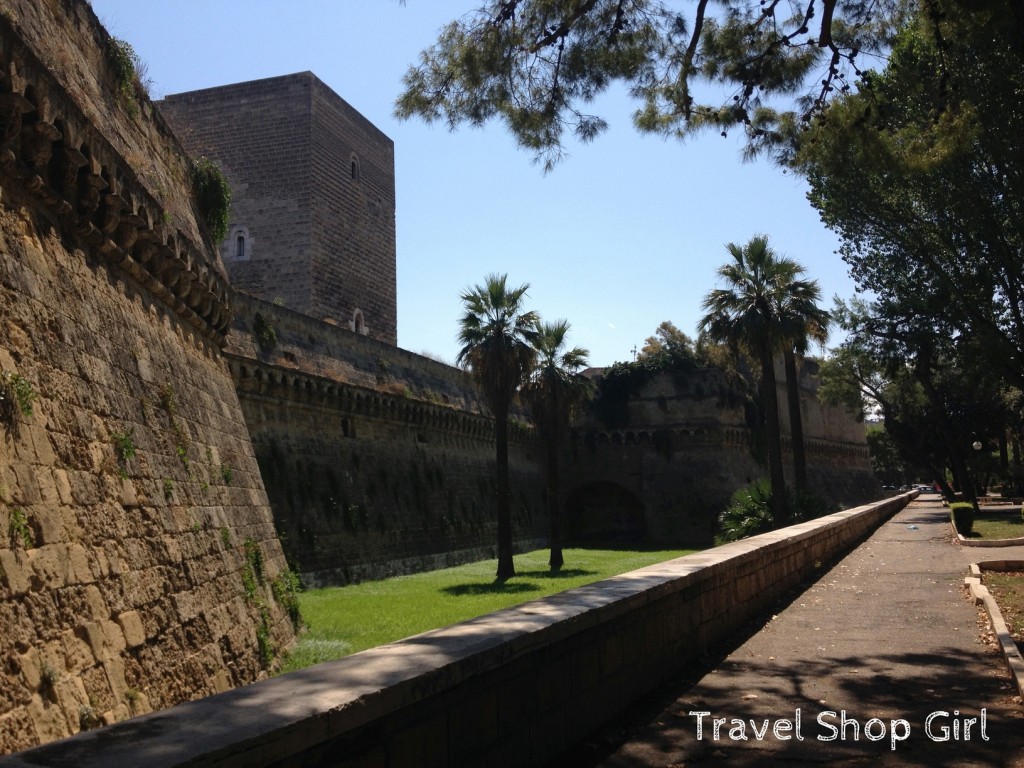
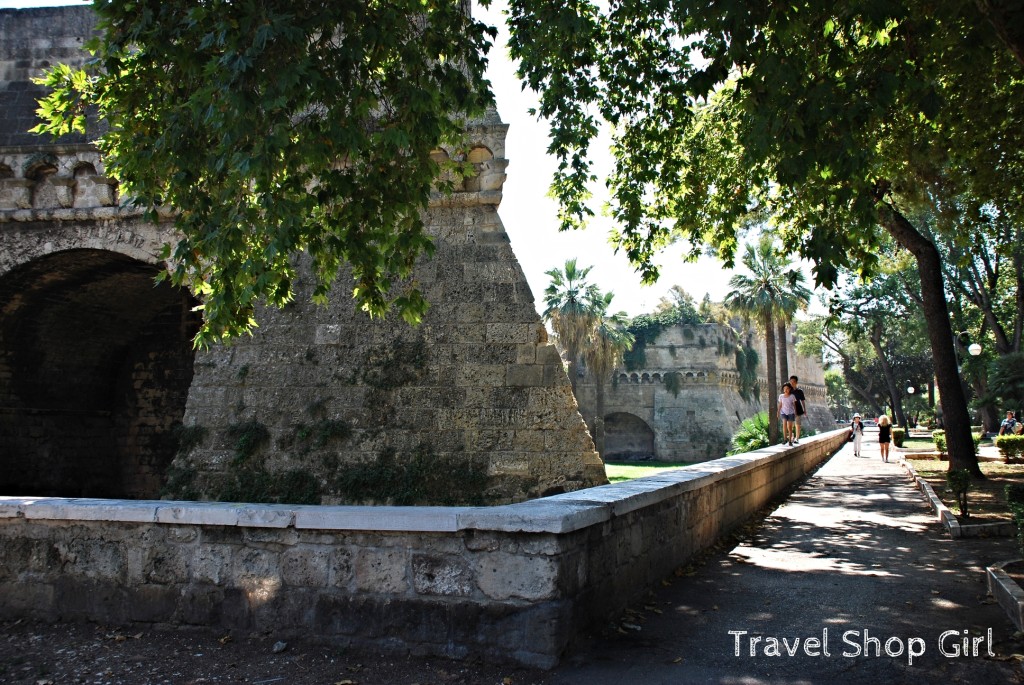
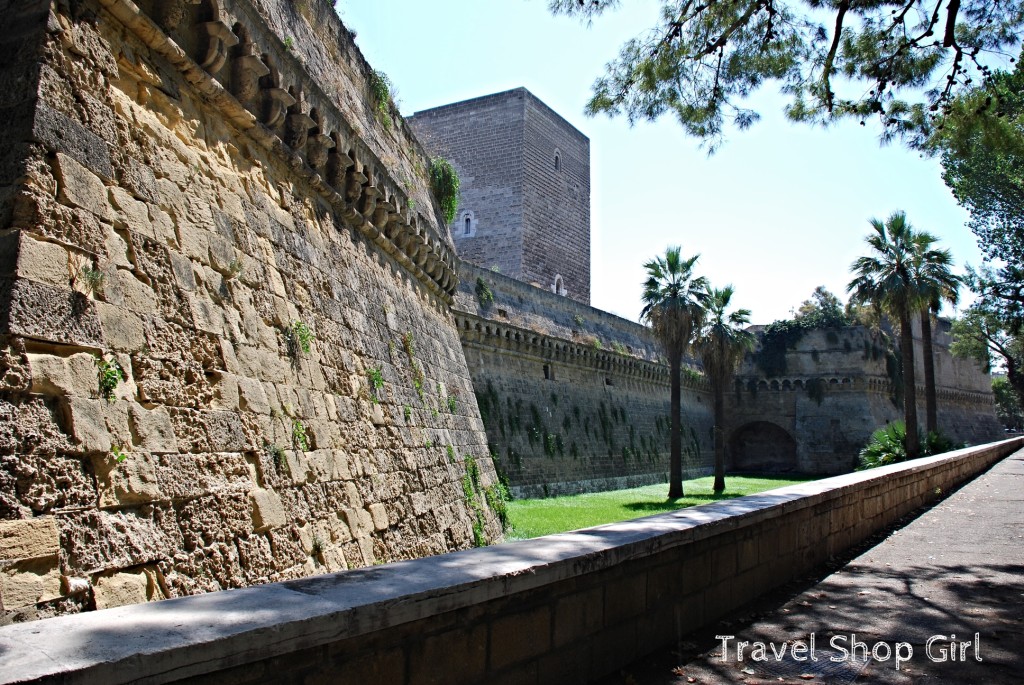
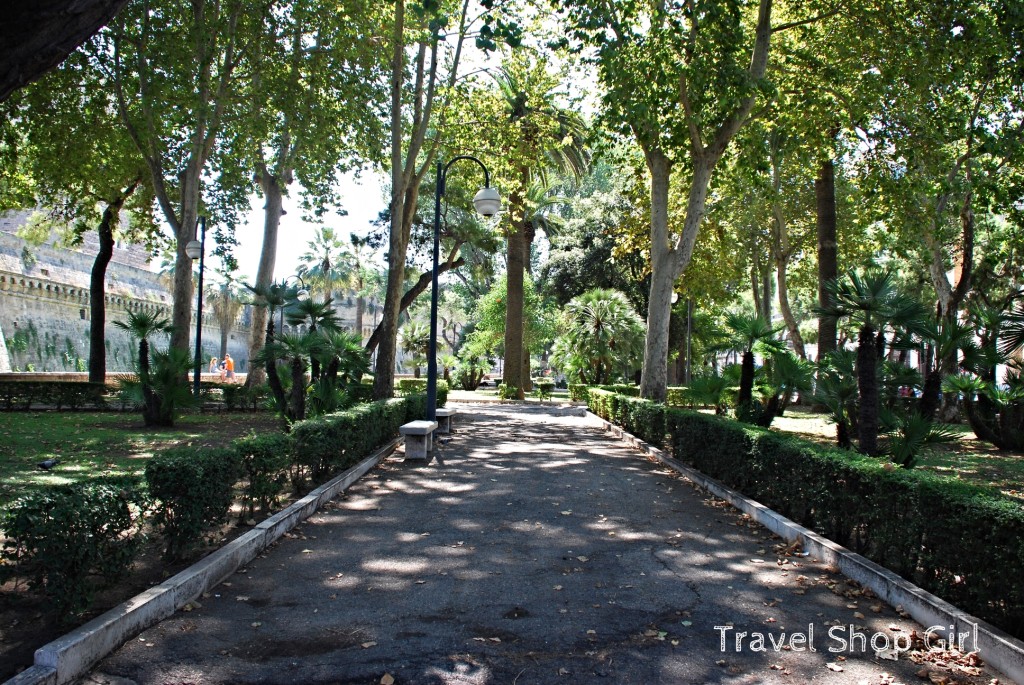
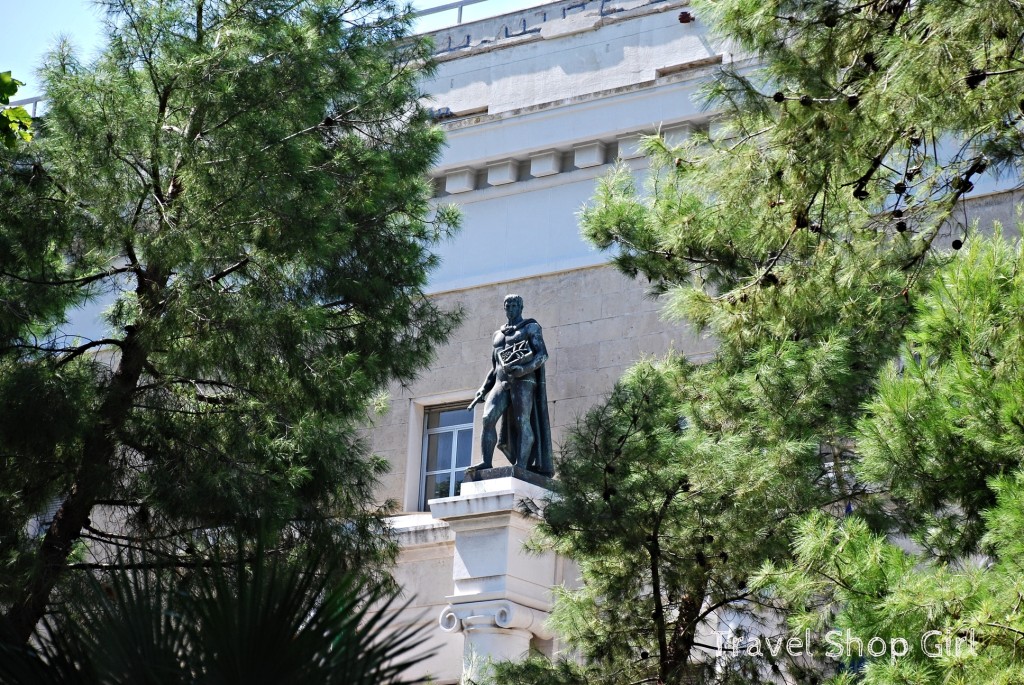
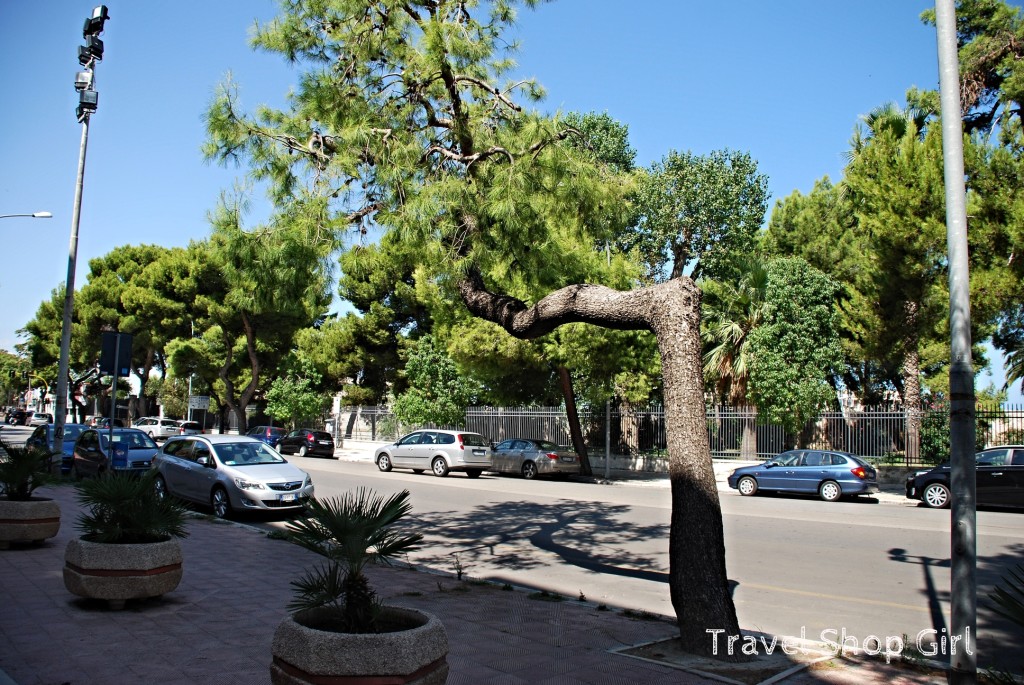
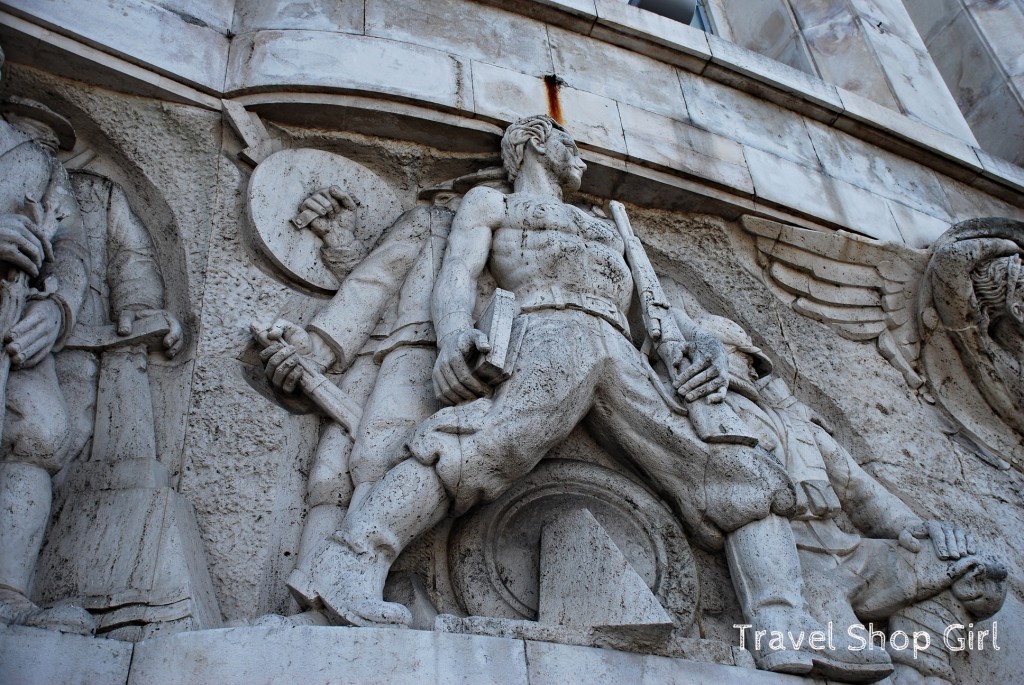
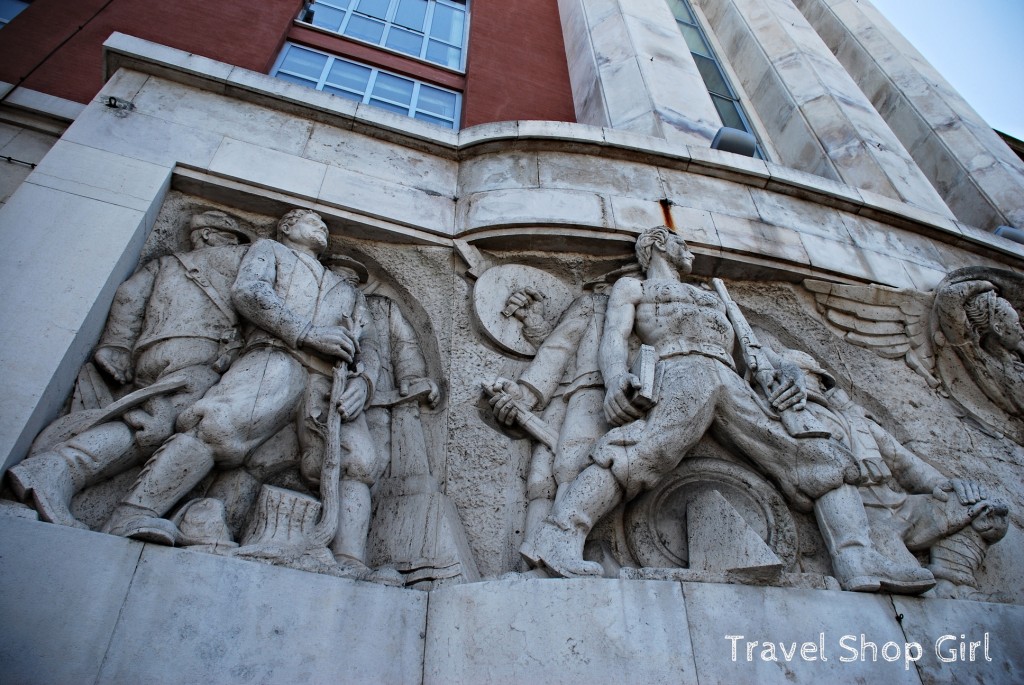
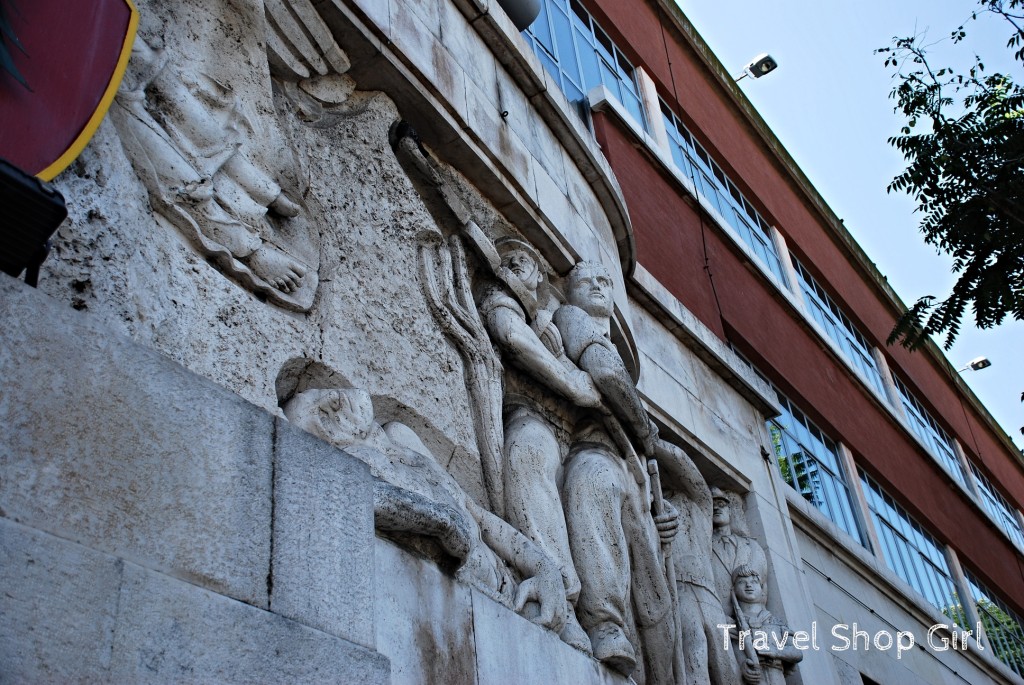
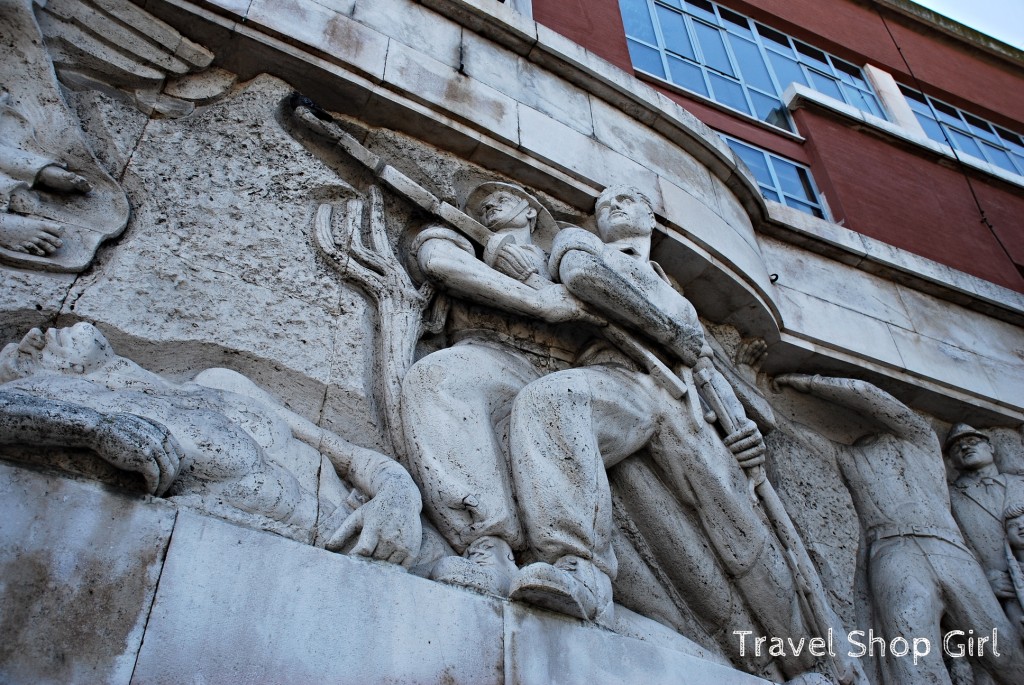
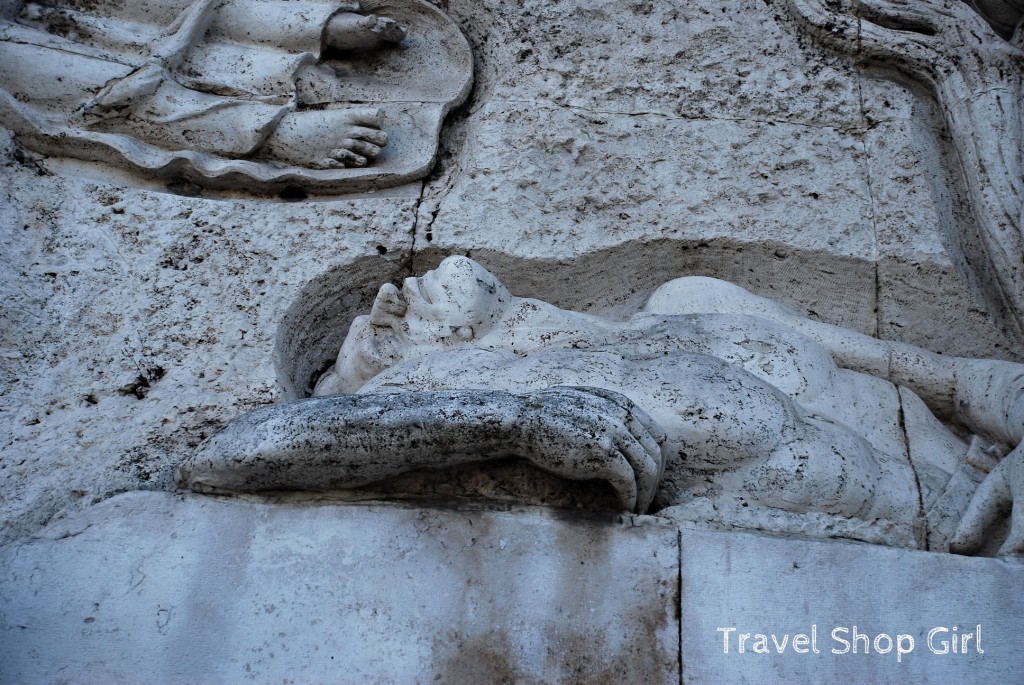
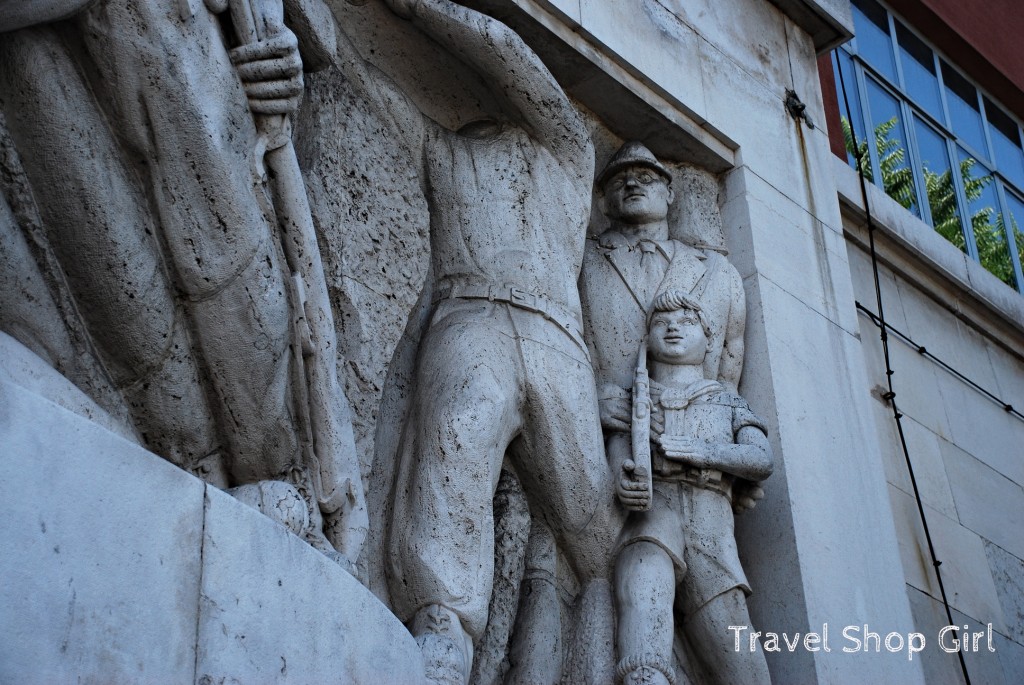
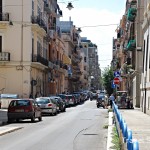
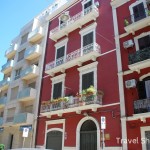
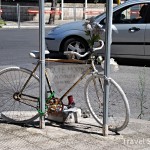
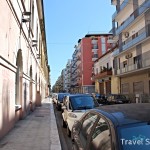
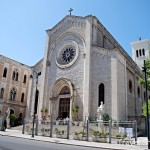

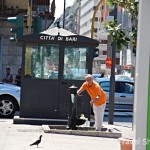
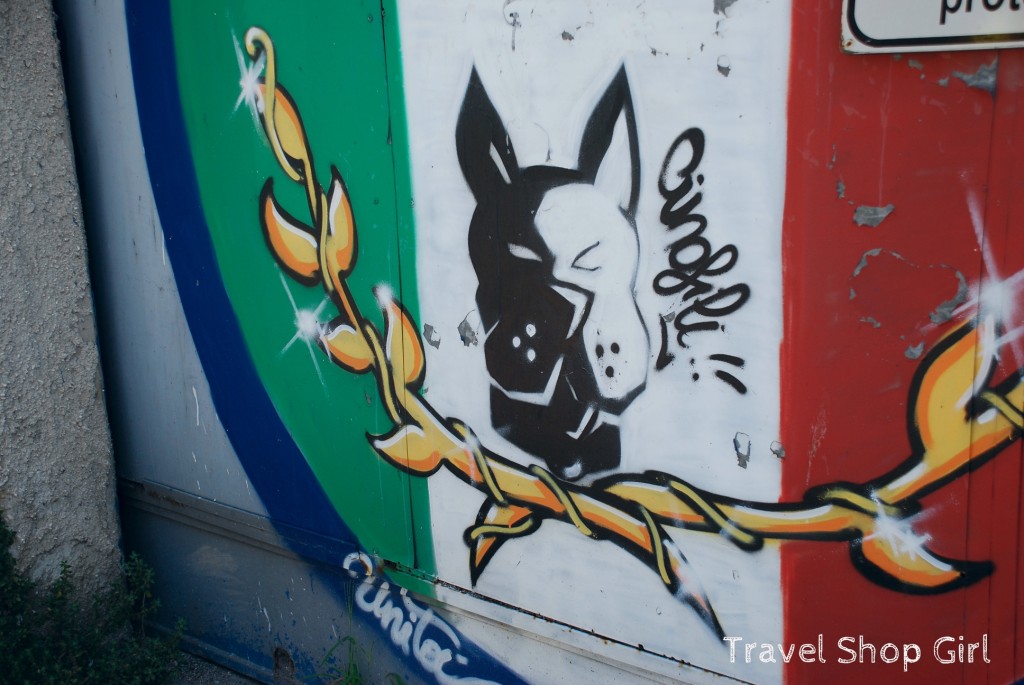
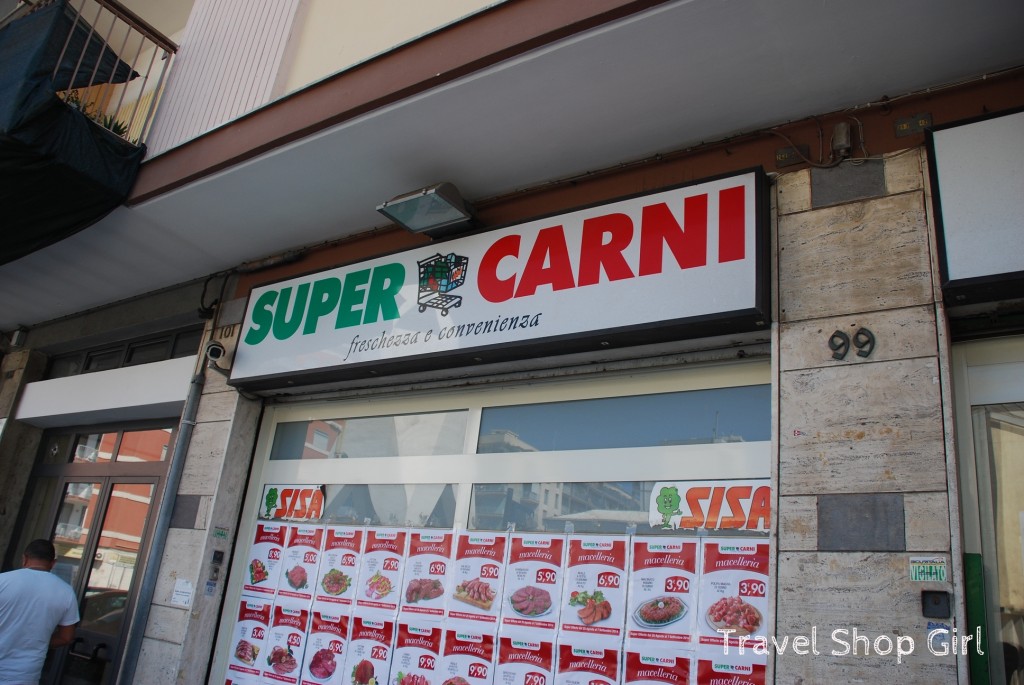
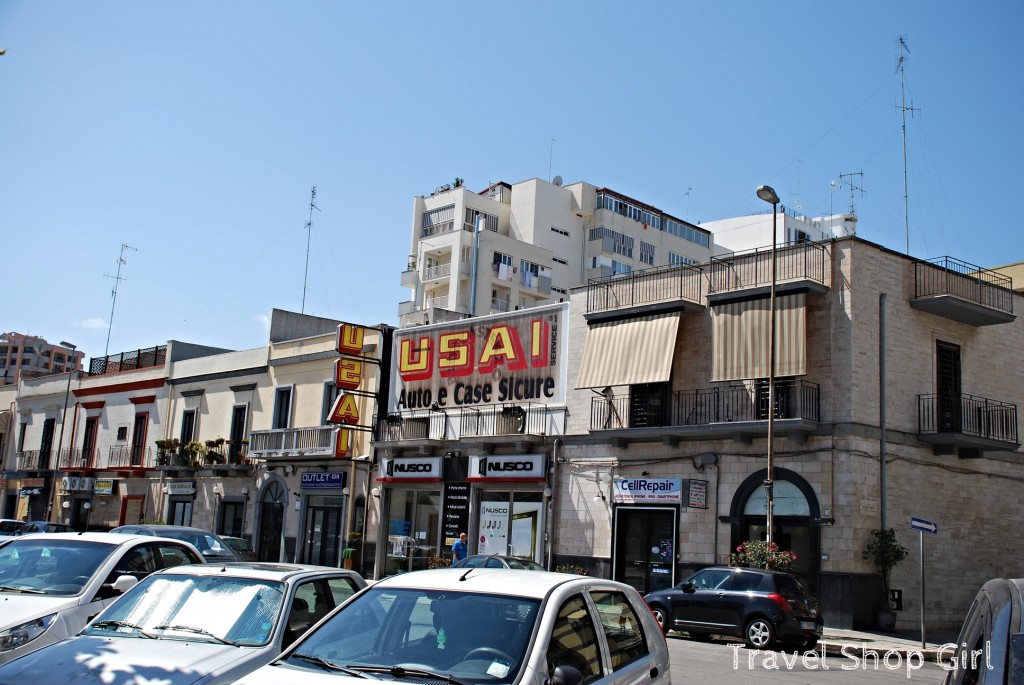
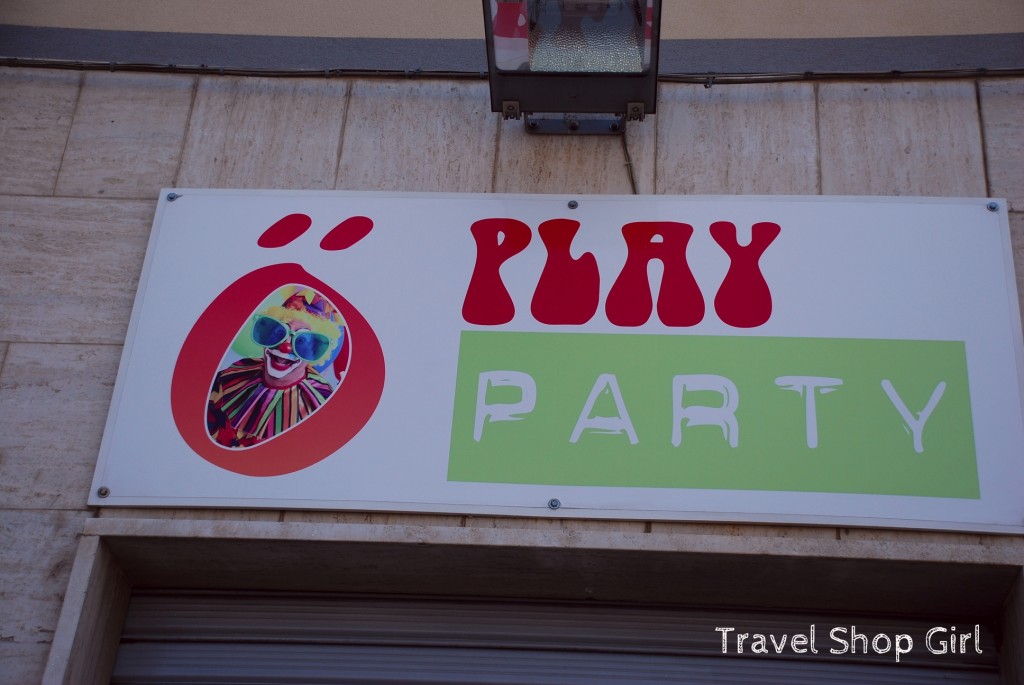
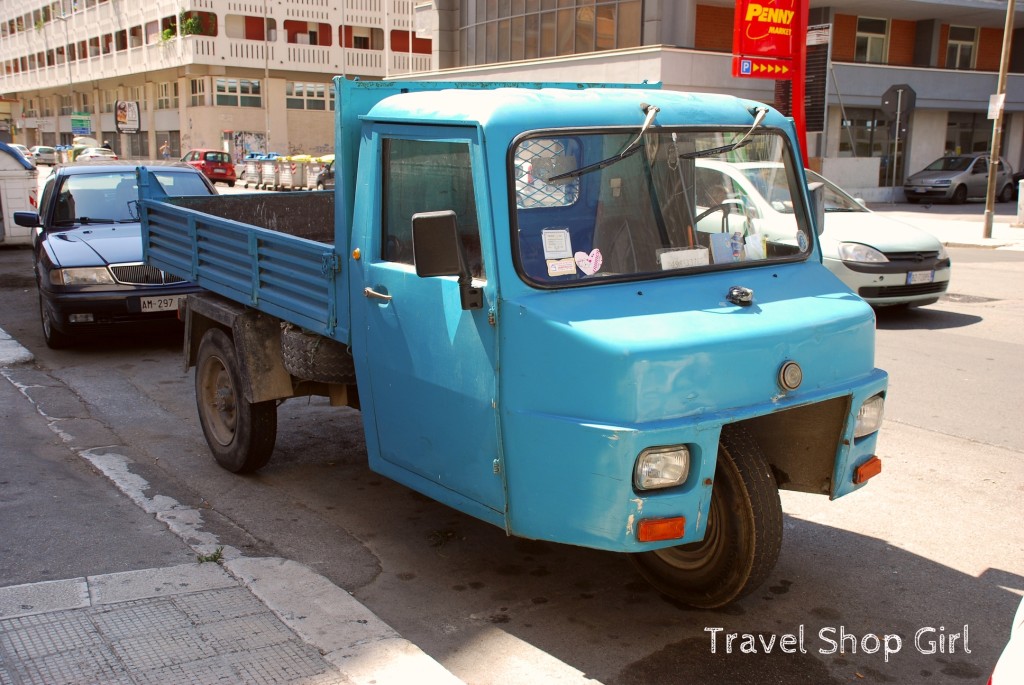
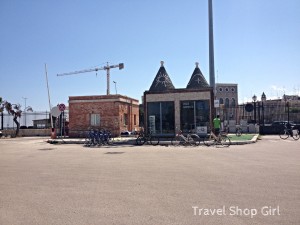
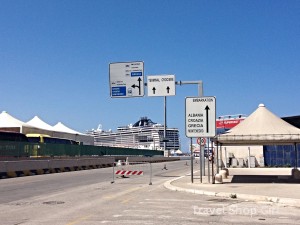
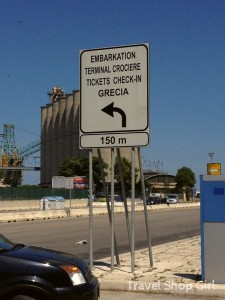
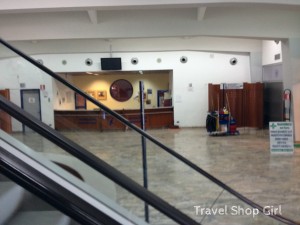
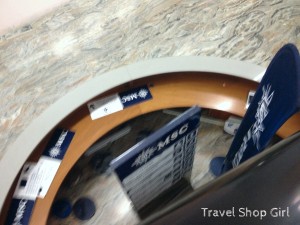
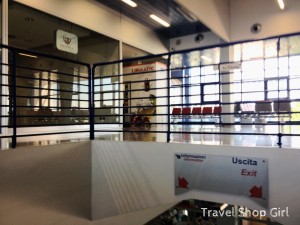
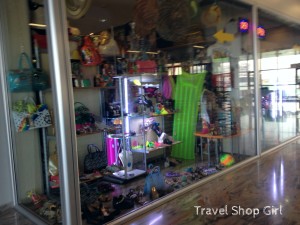
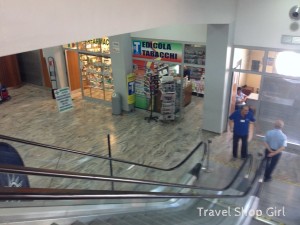
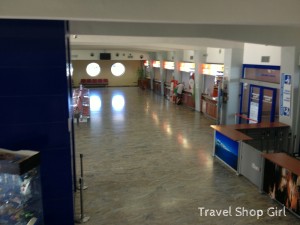
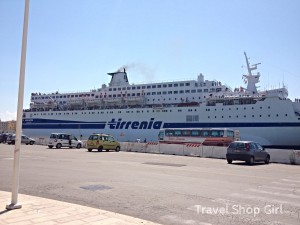
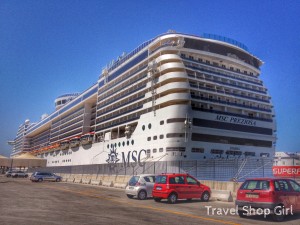
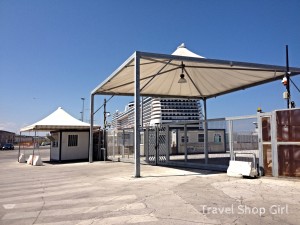
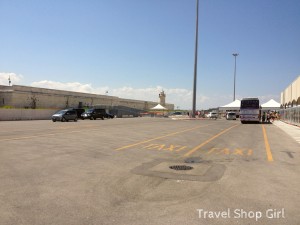
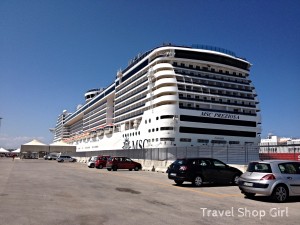
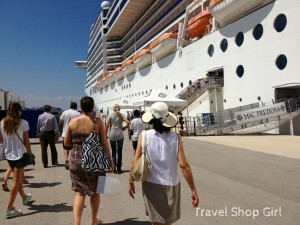
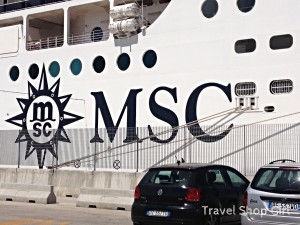
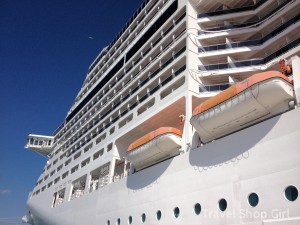
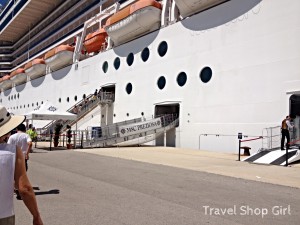
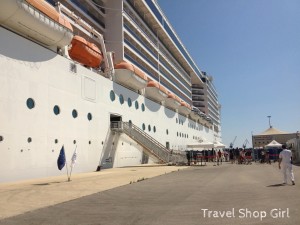
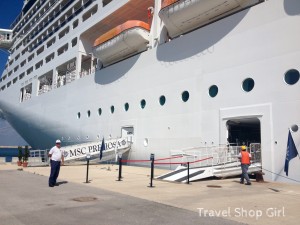
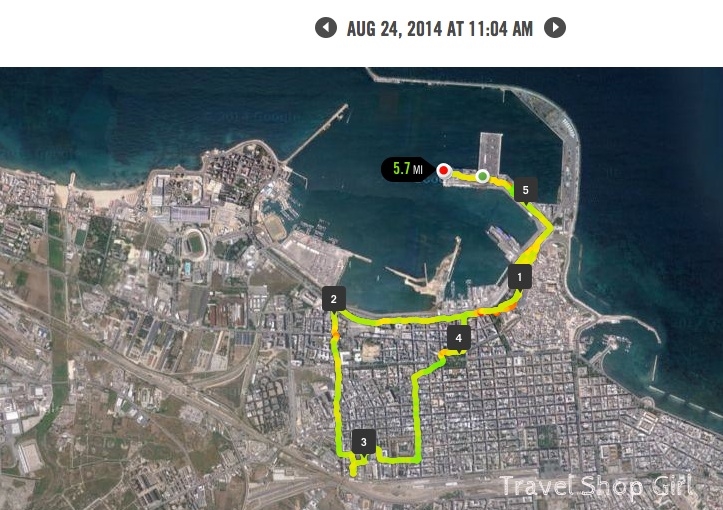
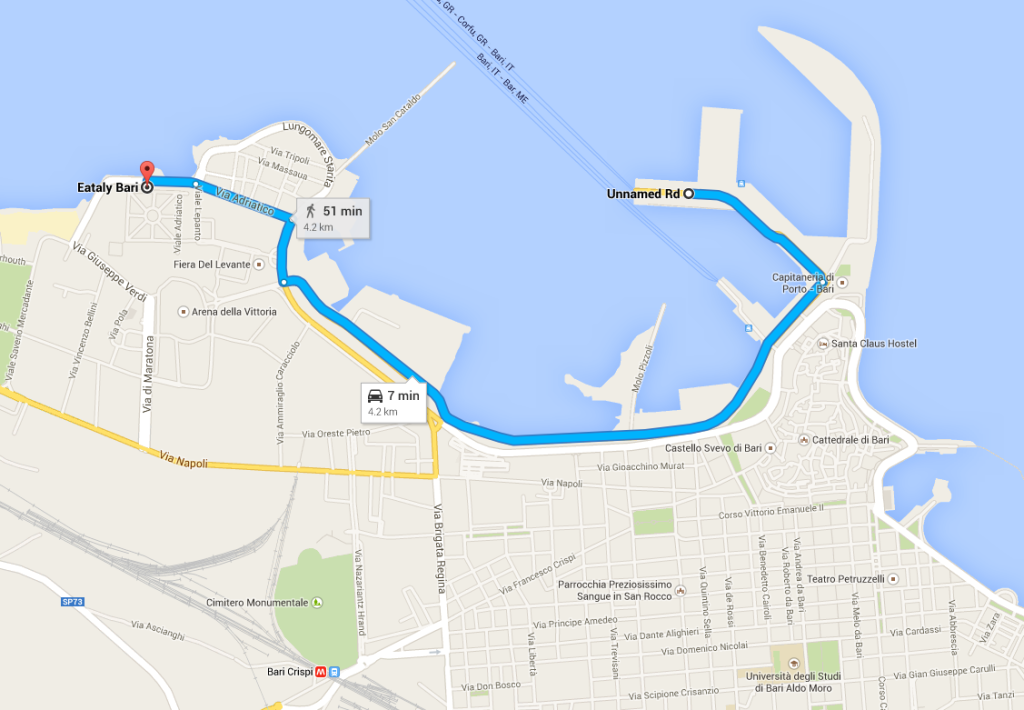
One thought on “Bari, Italy: To Eataly or Not to Eataly – That is the Question”
Comments are closed.